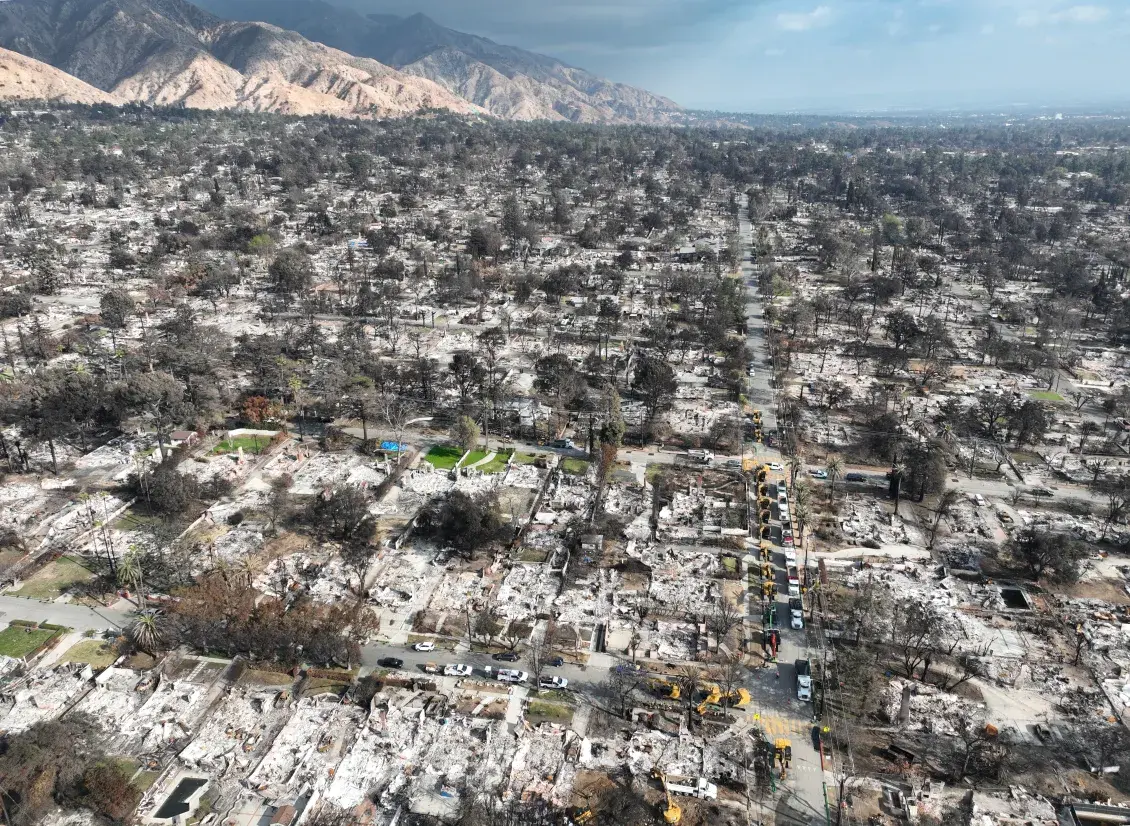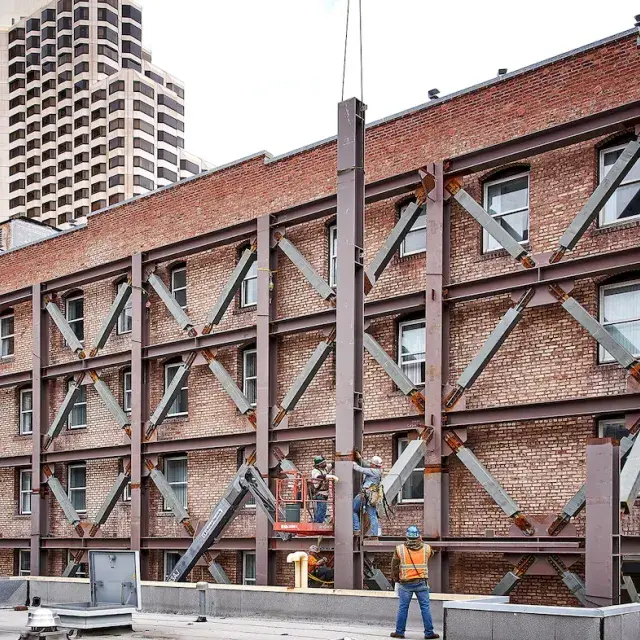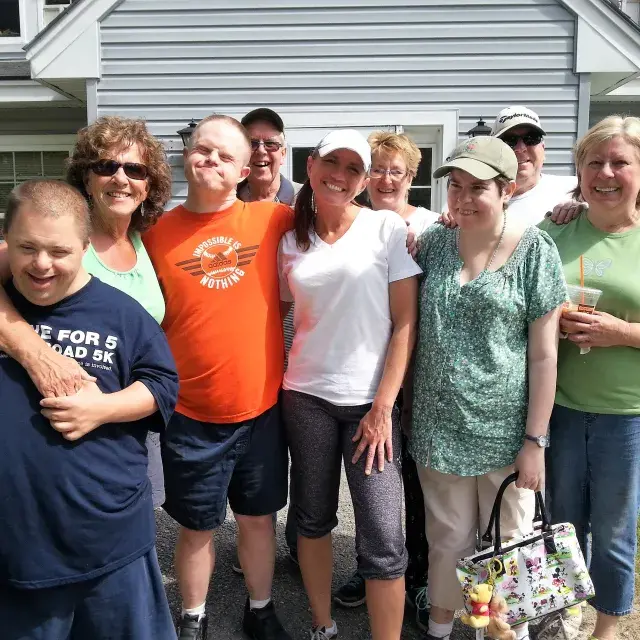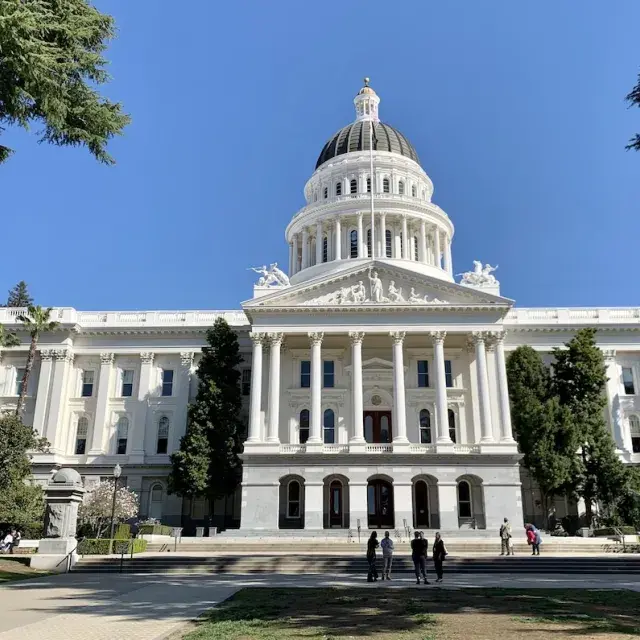The recent wildfires that swept through the Greater Los Angeles region, including the Eaton Fire and Pacific Palisades Fire, provided a wakeup call that climate disasters don’t discriminate geographically. Wildfires aren’t just a rural or hillside concern — they're an increasing threat to communities throughout the West and across the country, including urban neighborhoods and affordable housing developments.
For low-income renters and affordable housing providers, wildfire resilience isn’t just about rebuilding — it's about survival and thoughtful recovery. Every disaster threatens to displace residents permanently, drive up insurance costs, and wipe out years of effort to keep housing affordable. It’s clear that what happens in the months and years after a fire will determine who gets to return and who gets left behind.
As Los Angeles begins the long process of rebuilding, affordable housing providers are taking hard-earned lessons from those who have been through similar disasters, while updating emergency plans and taking steps to reinforce buildings and procedures to prepare for future wildfires.
Lessons from Santa Rosa's Recovery following the Tubbs Fire
In 2017, the Tubbs Fire tore through Northern California, leveling thousands of homes, including affordable multi-family properties. The rebuilding process exposed just how unprepared the affordable housing sector was for a disaster of that scale.
“There is no coherent plan for how you go about rebuilding.” said Larry Florin, CEO and President of Burbank Housing, one of the affordable housing nonprofits impacted by the Tubbs fire. "It feels like you don't find out what to do until it happens, and then it's too late because you're in the middle of it.”
In the aftermath of the Tubbs fire, Burbank Housing took on the challenge of redeveloping a former mobile home park that had been destroyed, transforming it into an apartment complex for low-income seniors. But rebuilding wasn’t just about securing funding and breaking ground — it was an uphill battle against bureaucracy and unclear regulations.
The rules are not written in a way to deal with a disaster and the aftermath.
Larry florin, ceo and president, Burbank housing
Florin stressed that there were many hurdles to rebuilding. One of the biggest challenges was relocation for displaced residents. “We knew we had a responsibility for relocation for the residents who had...been displaced, but we had no idea what that relocation looked like, legally,” Florin explained. Despite seeking guidance from HUD and HCD, Burbank Housing received “literally no response in a year and a half.”
With no clear legal framework, they took matters into their own hands, securing a $5 million donation from the philanthropic group Tipping Point to compensate displaced residents. “We had no idea of the law, but after a year and half of waiting for assistance, we proceeded despite the potential legal risk.”
The experience reinforced a hard truth: affordable housing providers can’t afford to wait until disaster strikes to start advocating for the resources they’ll need to recover. The bureaucracy isn’t built for speed, and without proactive planning, it’s residents who are left in limbo.
Enterprise was on the ground after the Tubbs Fire to help rebuild affordable housing in Sonoma County, and the team saw first-hand the struggles that renters, especially tenants who were low-income, people of color, and/or people with disabilities face when trying to get support in the aftermath of a disaster. In response, Enterprise has developed and launched a number of programs and tools to demystify complicated funding mechanisms, increase capacity for communities, and make information on disaster recovery and mitigation more accessible for vulnerable communities.
What Housing Providers in Los Angeles Are Learning
In Los Angeles, several affordable housing properties narrowly escaped destruction in the recent wildfires. But for the organizations managing those buildings, the experience was a wake-up call.
For one local affordable housing provider, the Eaton Fire put a permanent supportive housing building on high alert. The property housed residents with disabilities and mental health conditions, yet in the crucial early days of the fire, there was no clear guidance on whether to evacuate. “We were getting mixed messages from the [County]. We couldn’t figure out whether they really wanted us to evacuate or not,” said a staff member from the organization. “It was stressful beyond belief.”
Without a solid emergency plan, staff were left scrambling to figure out logistics in real-time. “Do we really need to go? Where do these 45 people go if we have to evacuate? How do we assist the disabled?” They also struggled with gaps in coordination between agencies. “I think the city didn’t have a plan, and I don’t think that we, as owners, had an adequate plan.”
The experience has since pushed the organization to prioritize an evacuation strategy, but they believe stronger citywide standards are needed. “It would be good to start off with a plan instead of having to do it off to the side,” they said. They also argue that developments in fire-prone areas must be built with resilience in mind.
While this fire didn’t force an evacuation, it exposed the risks of being unprepared. For affordable housing providers, disaster readiness can’t be an afterthought — it is a necessity.
Preparing for the Next Fire
Wildfires aren’t a hypothetical risk — they're here, and they will continue with increasing frequency and severity due to climate change. Affordable housing providers can take steps now to prepare,even as systemic challenges, financial strain, and disproportionate risks make resilience especially difficult — especially when serving low-income families and individuals who are most vulnerable to climate disasters. Here are some steps:
- Strengthen emergency plans – Ensure evacuation strategies account for all types of residents, including those with disabilities, seniors, and families.
- Use the Enterprise Ready to Respond Toolkit to create a Business Continuity Plan for your residents, buildings, and operations.
- Here’s a great example of a Wildfire Response Plan from Home Forward, an affordable housing provider in Oregon.
- Invest in fire-resistant upgrades – Retrofitting buildings with defensible space, ember-resistant materials, and upgraded ventilation systems can reduce fire risk.
- Tackle the insurance crisis – Advocate and work with policymakers to expand access to insurance and create financial protections for deed-restricted housing.
- Push for wildfire recovery funding – Advocate for state and federal programs that prioritize affordable housing in disaster response efforts.
- Some examples include the CalHome Disaster Assistance Program and FEMA’s Disaster Assistance Program.
Disasters like wildfires don’t just test emergency preparedness — they expose deep vulnerabilities in the housing system. But they also present an opportunity to rethink how we build, insure, and protect affordable housing in a changing climate.
The question isn’t whether another fire will come — it's whether we’ll be ready when it does.
Read part two in the Building Back in LA series: A Climate Crisis We Can No Longer Ignore.



